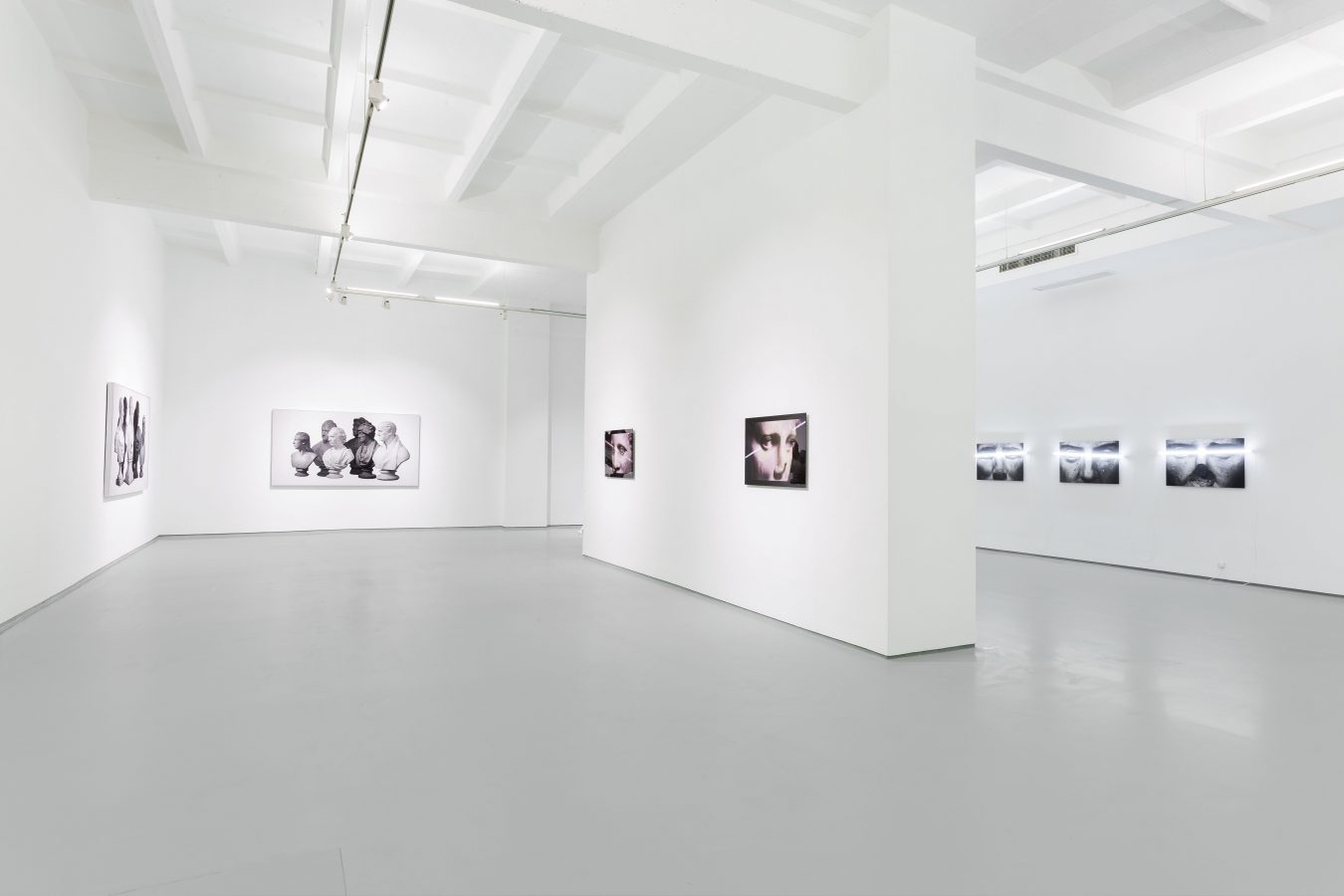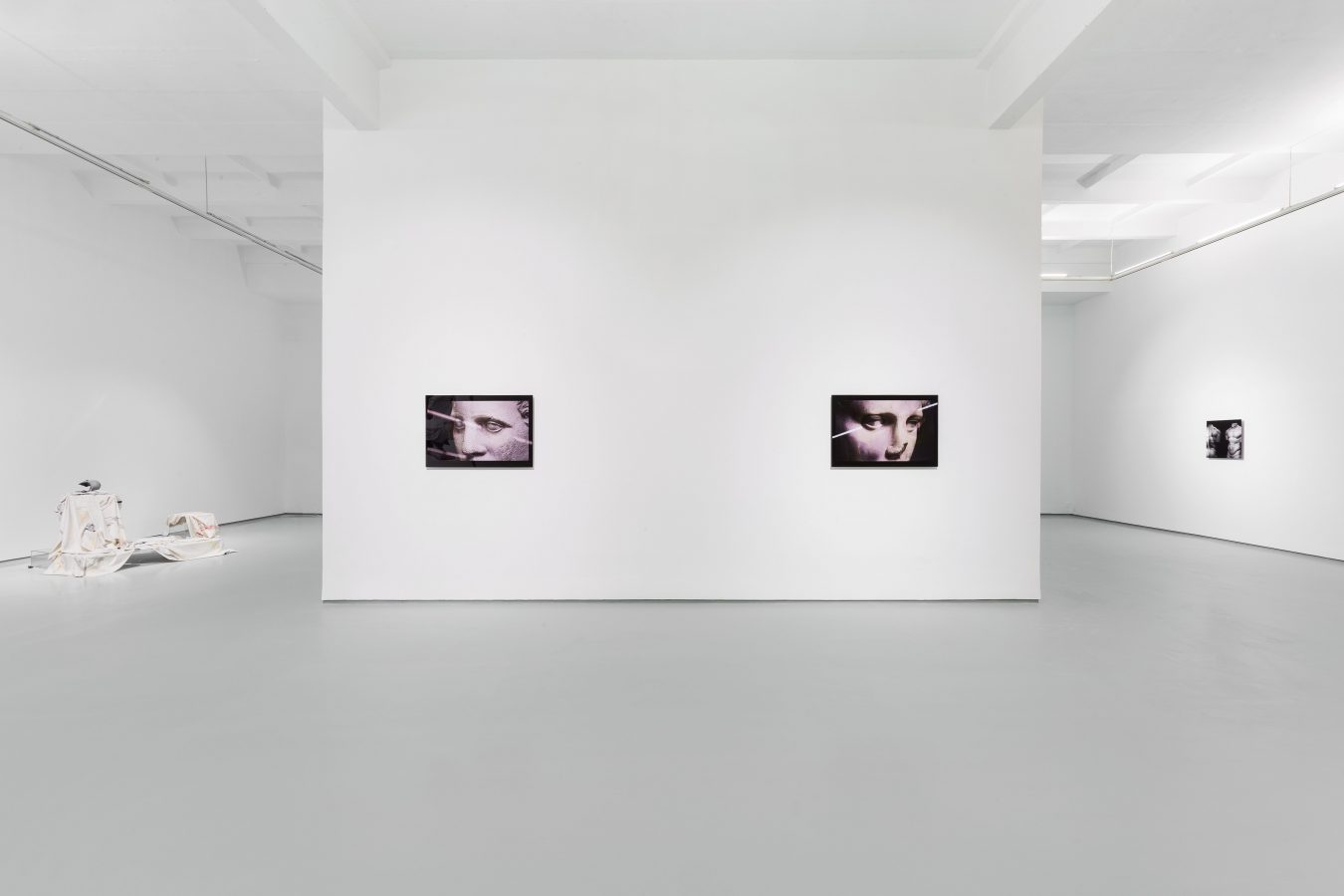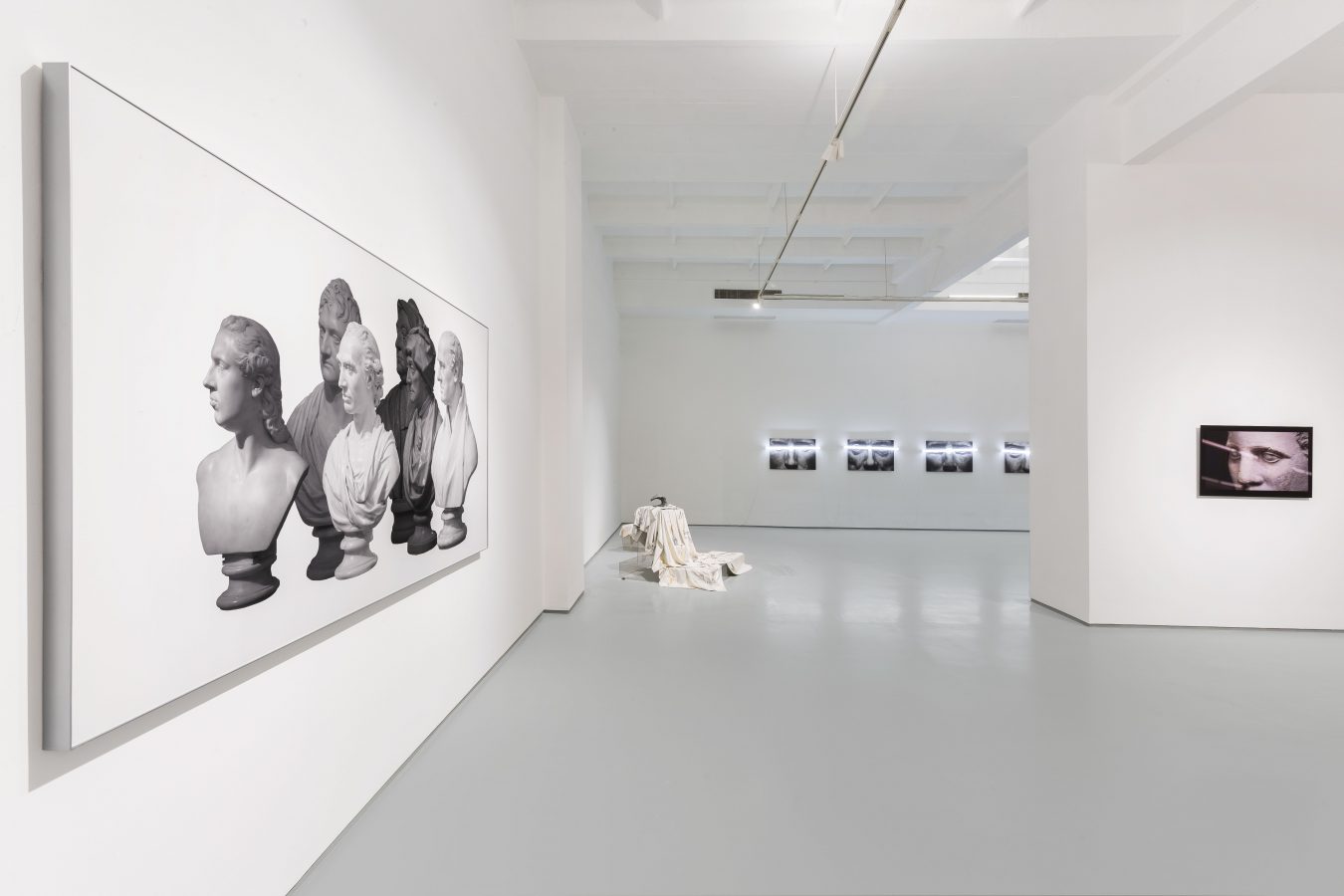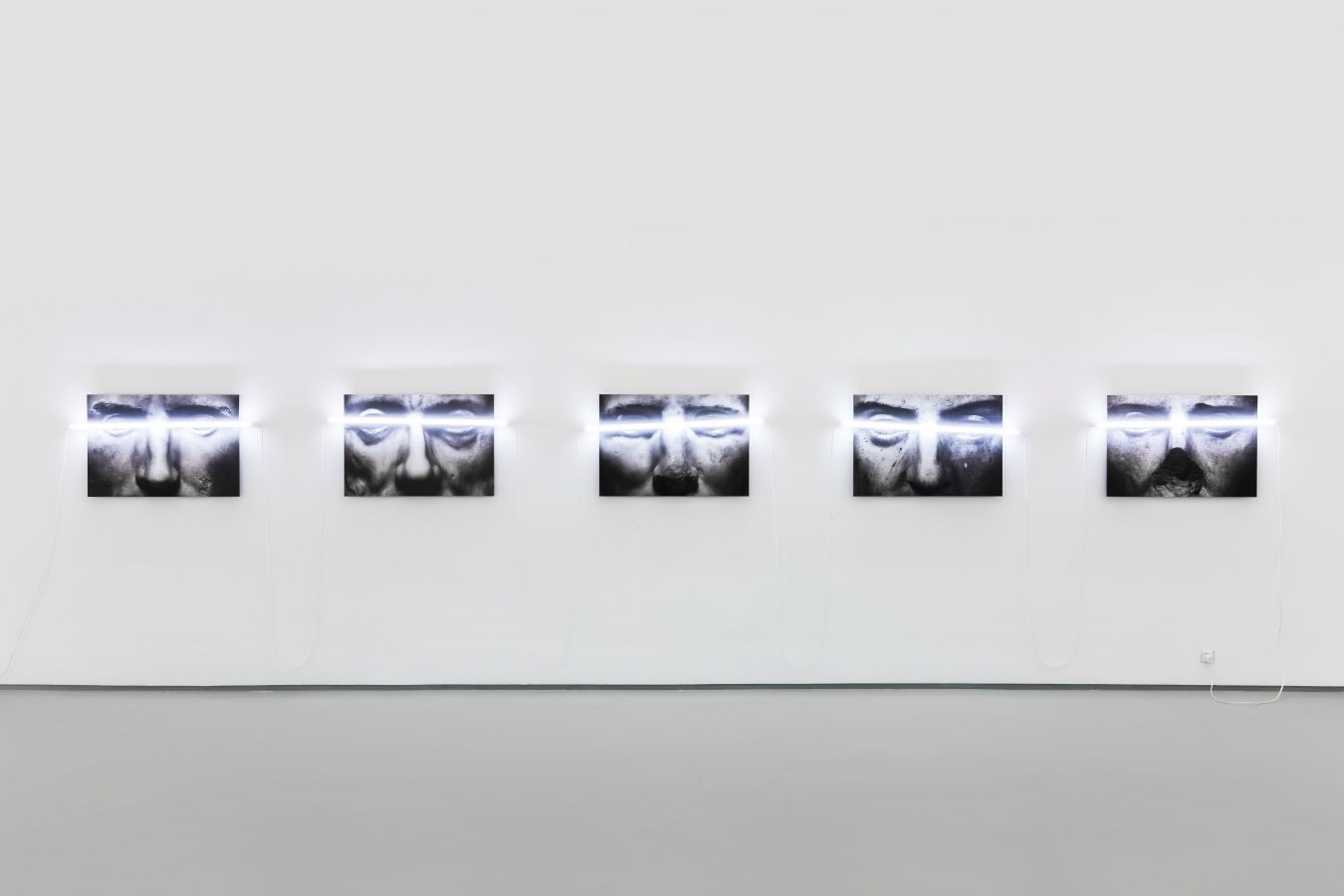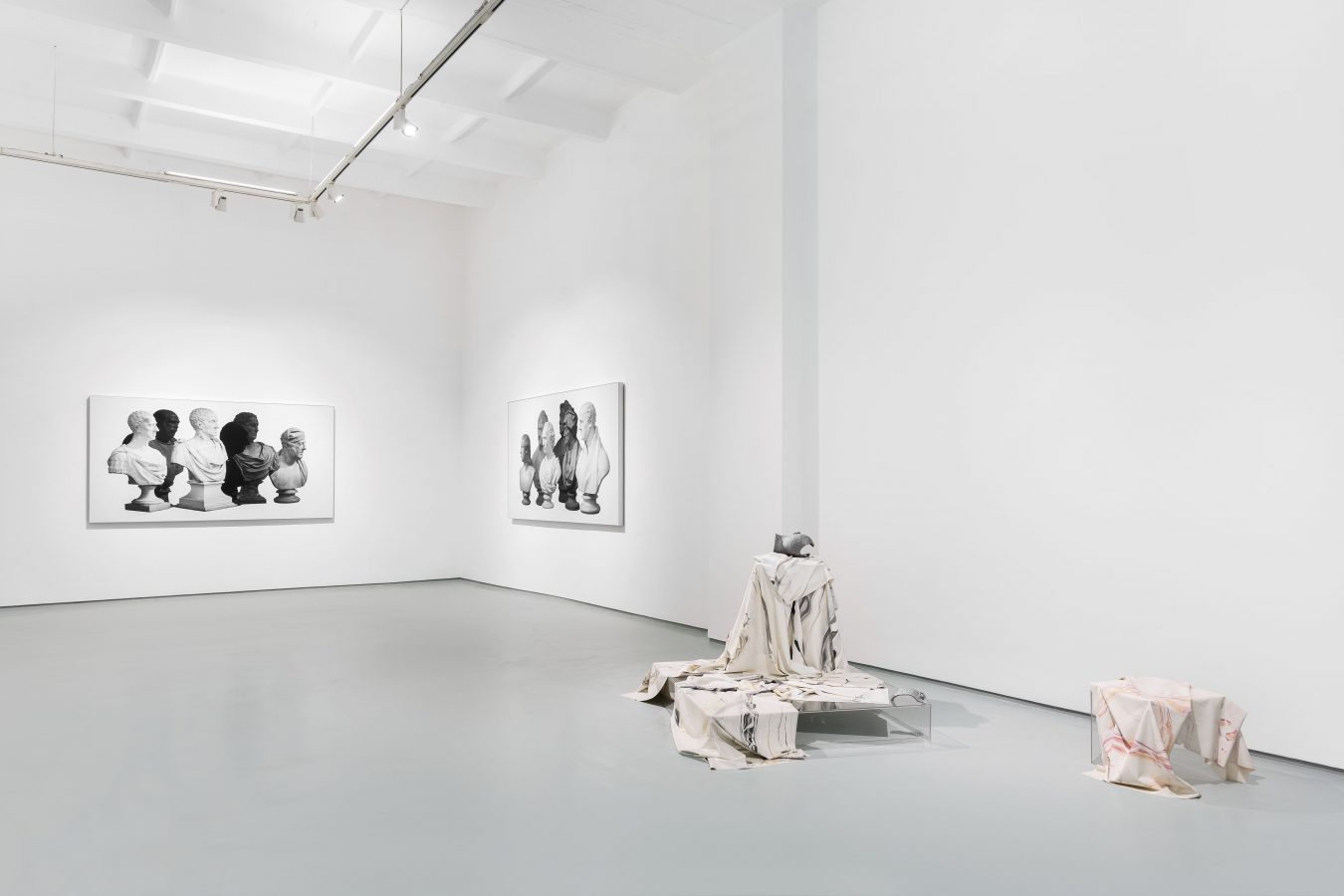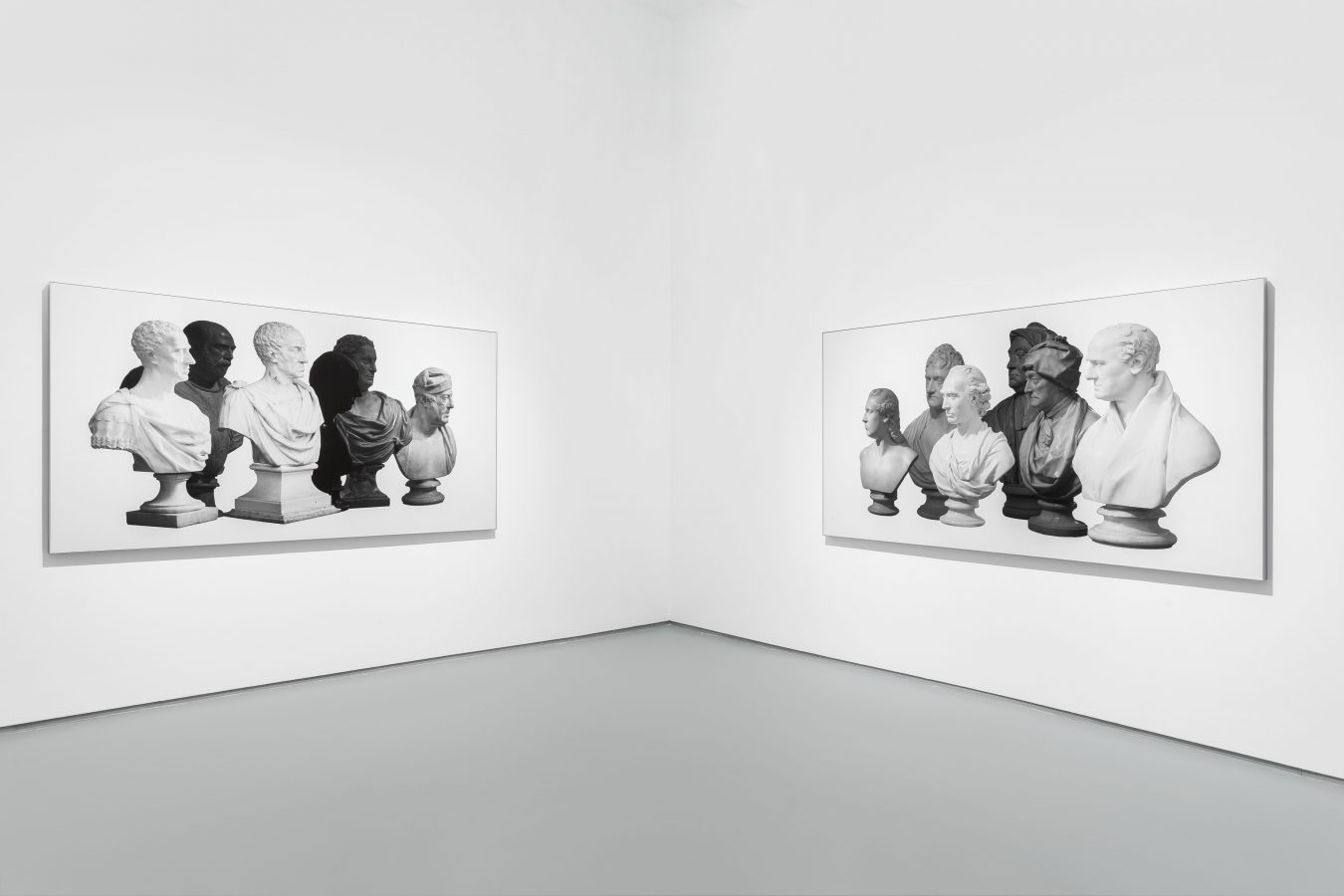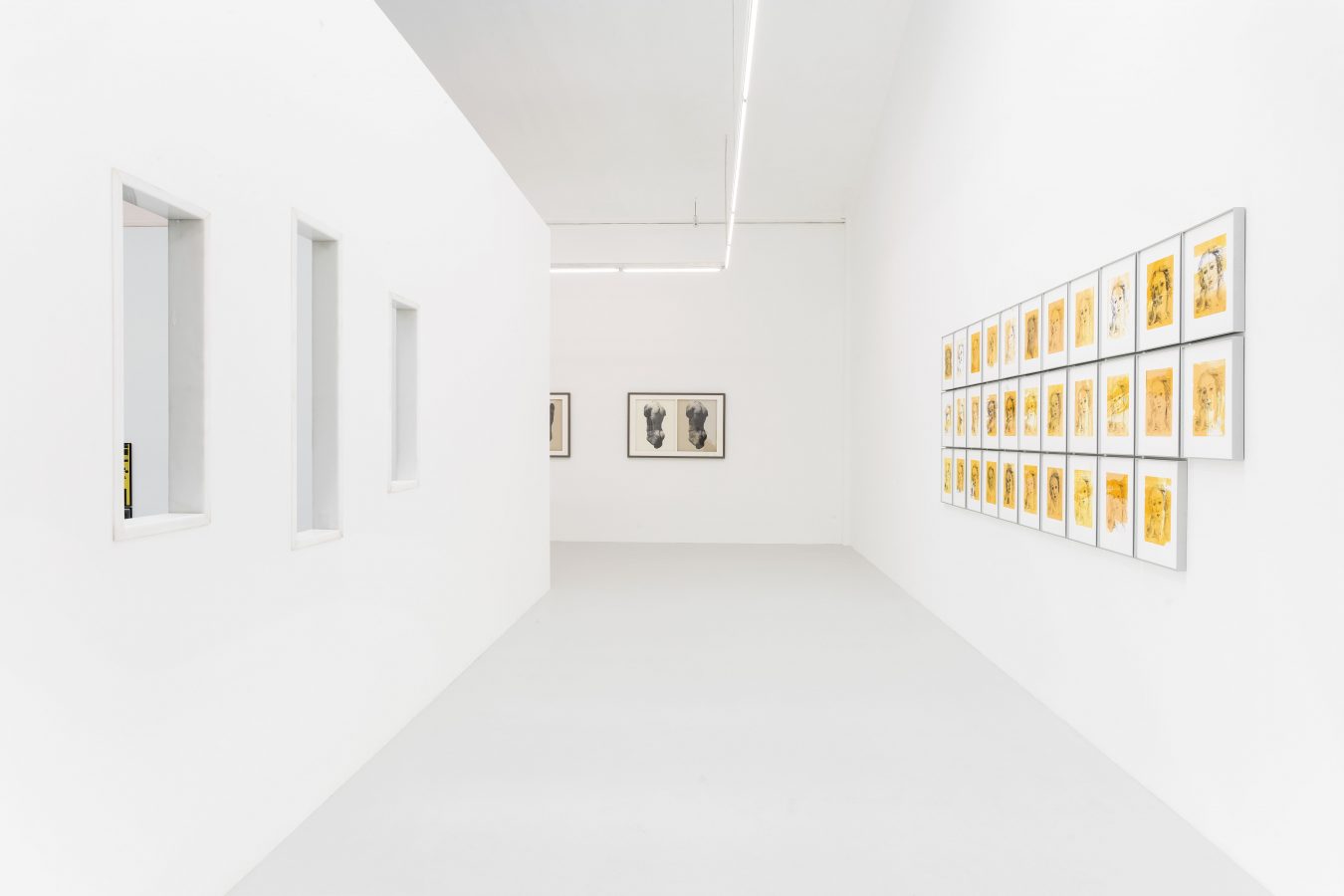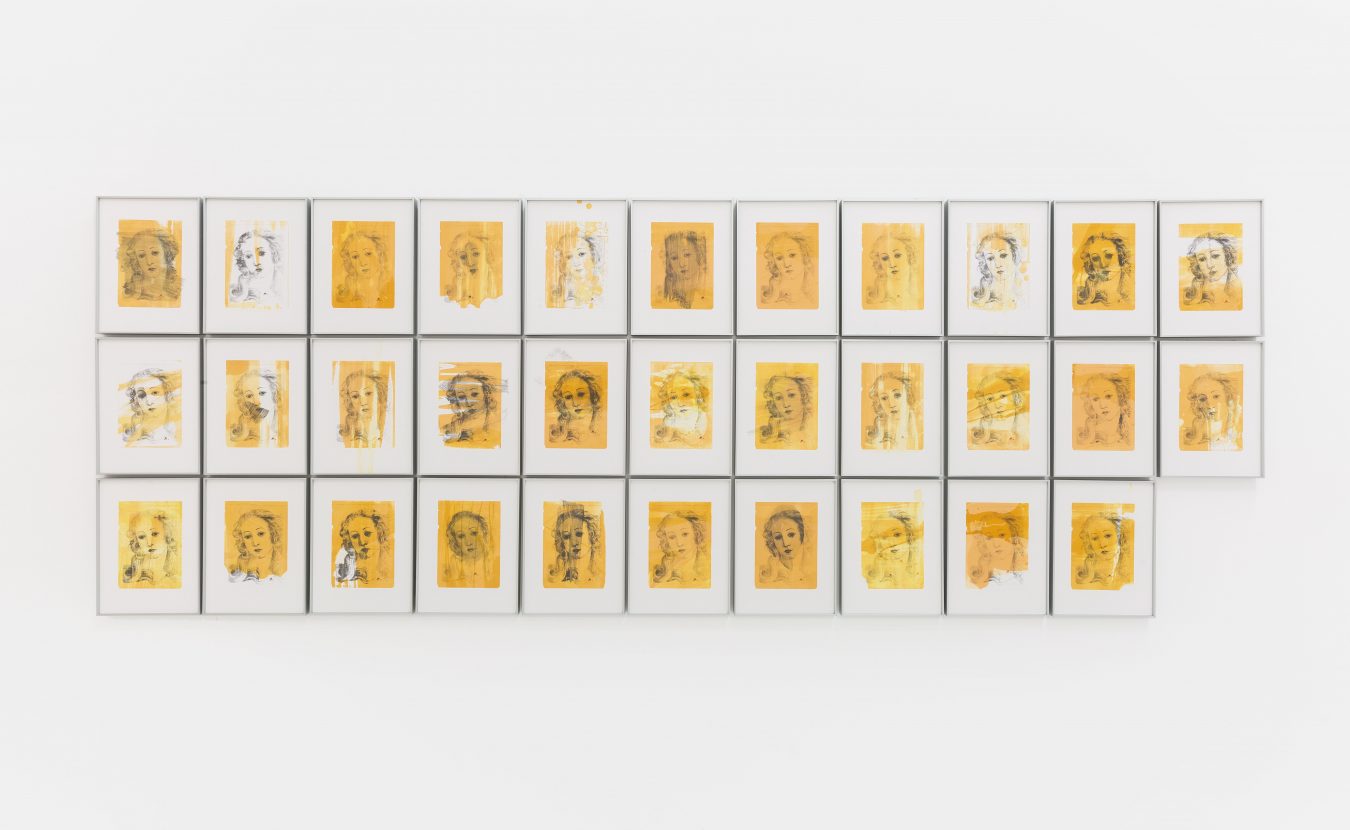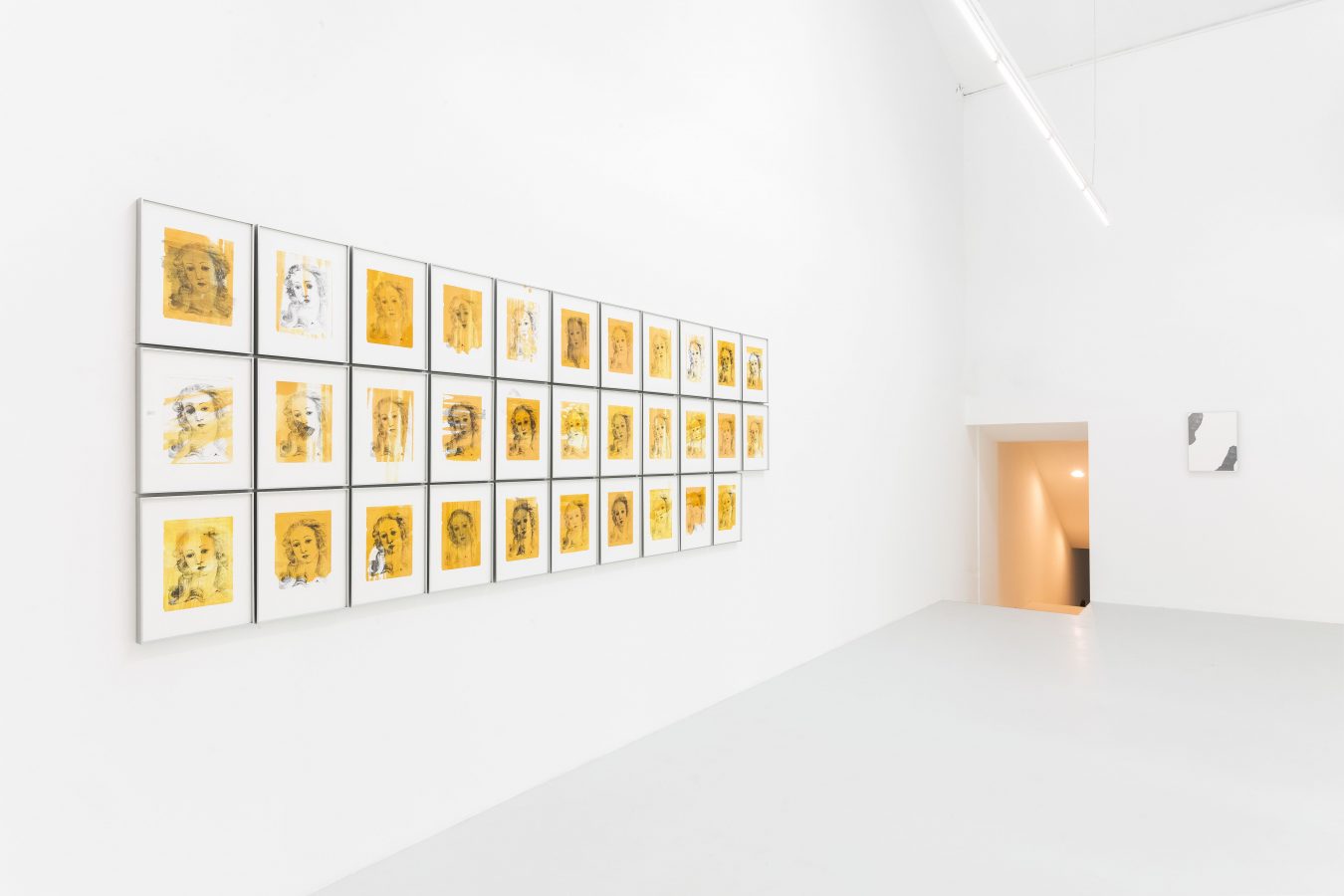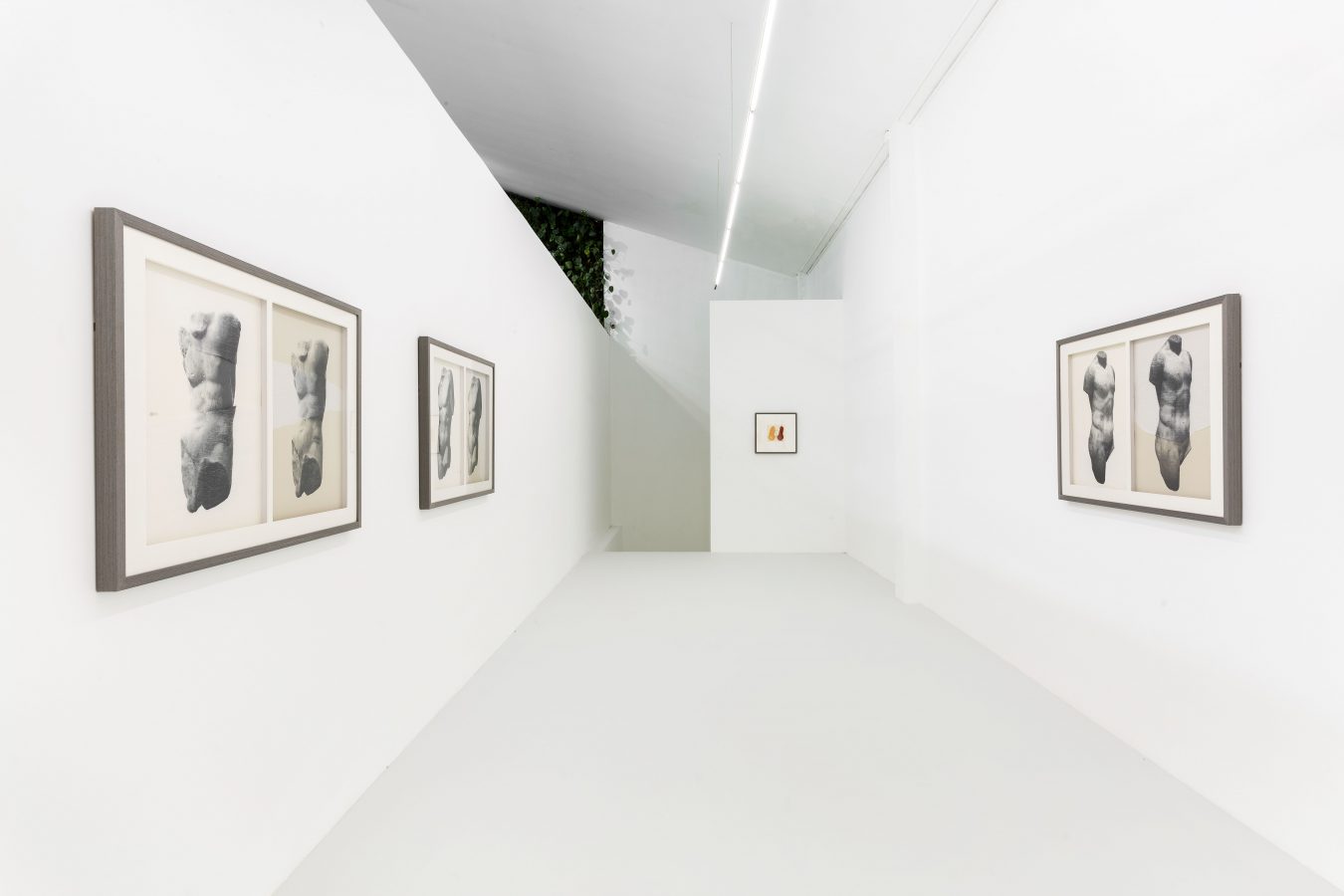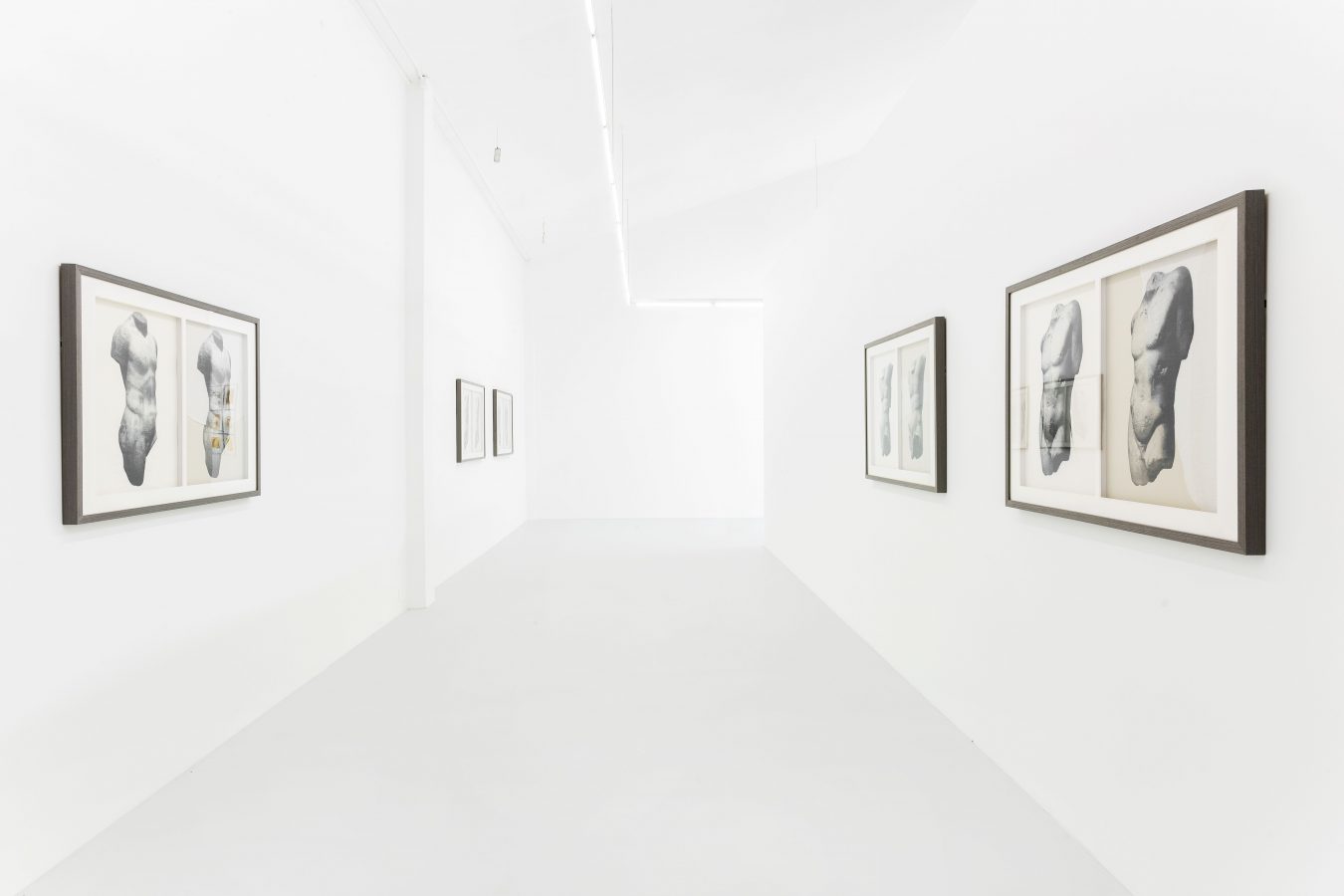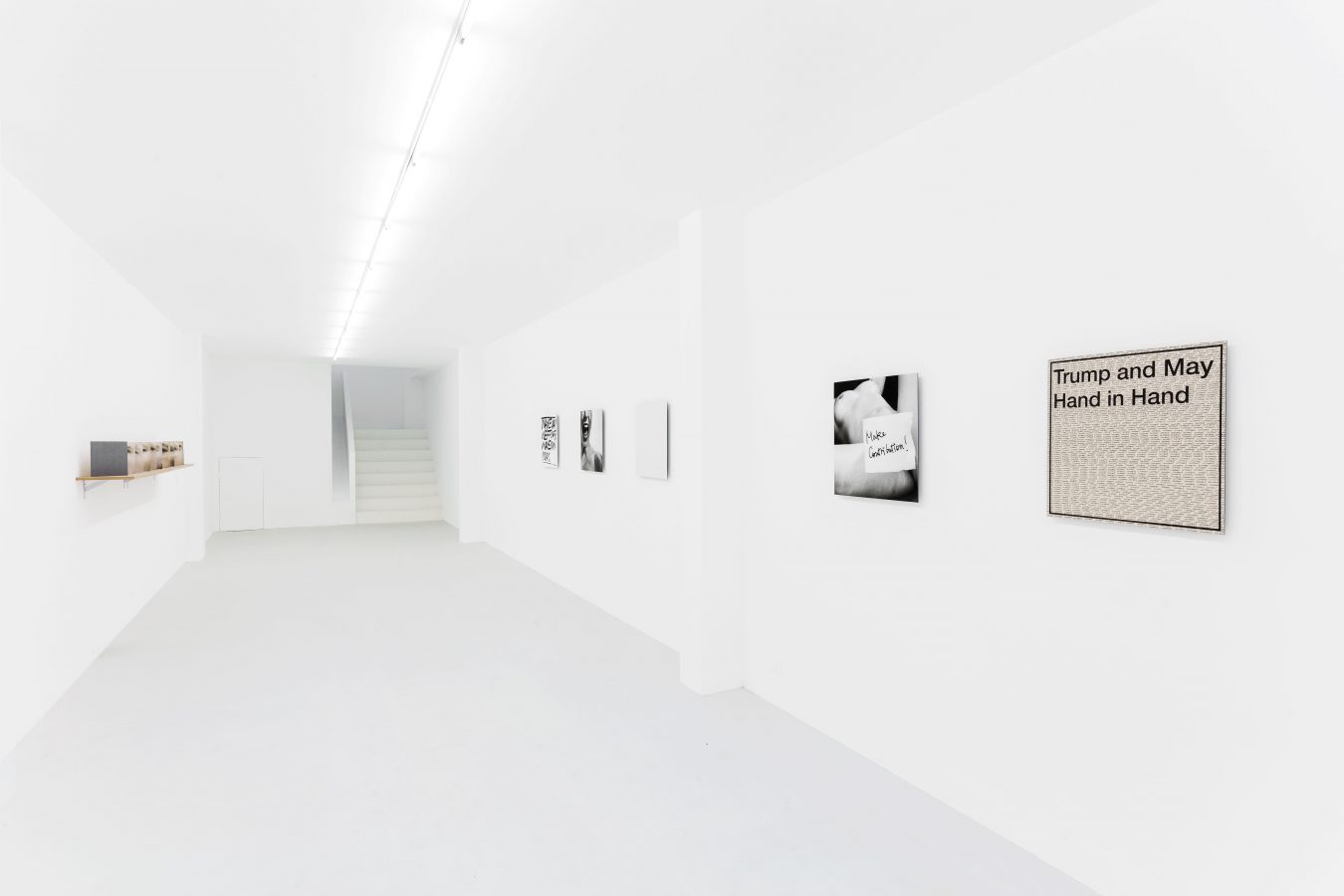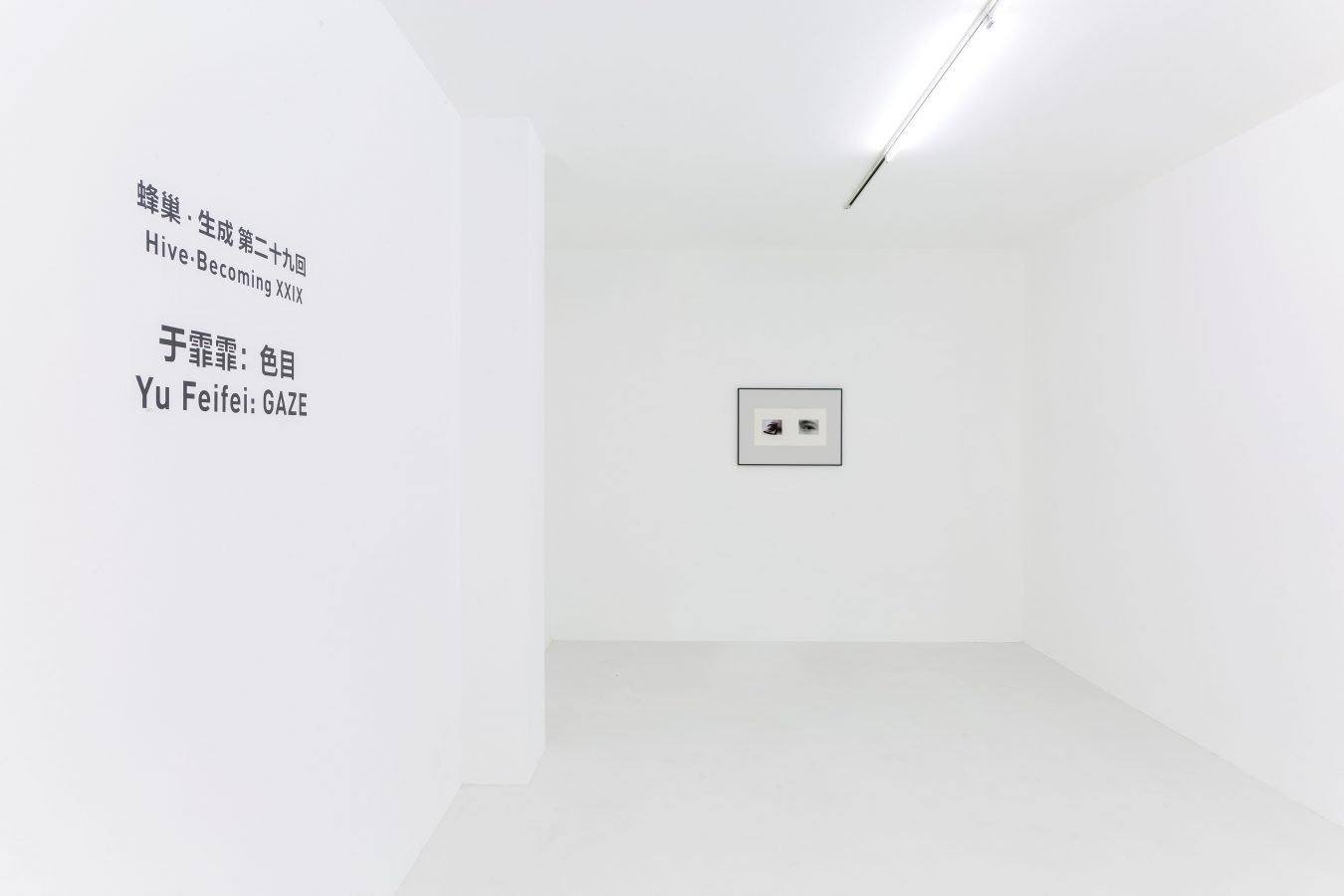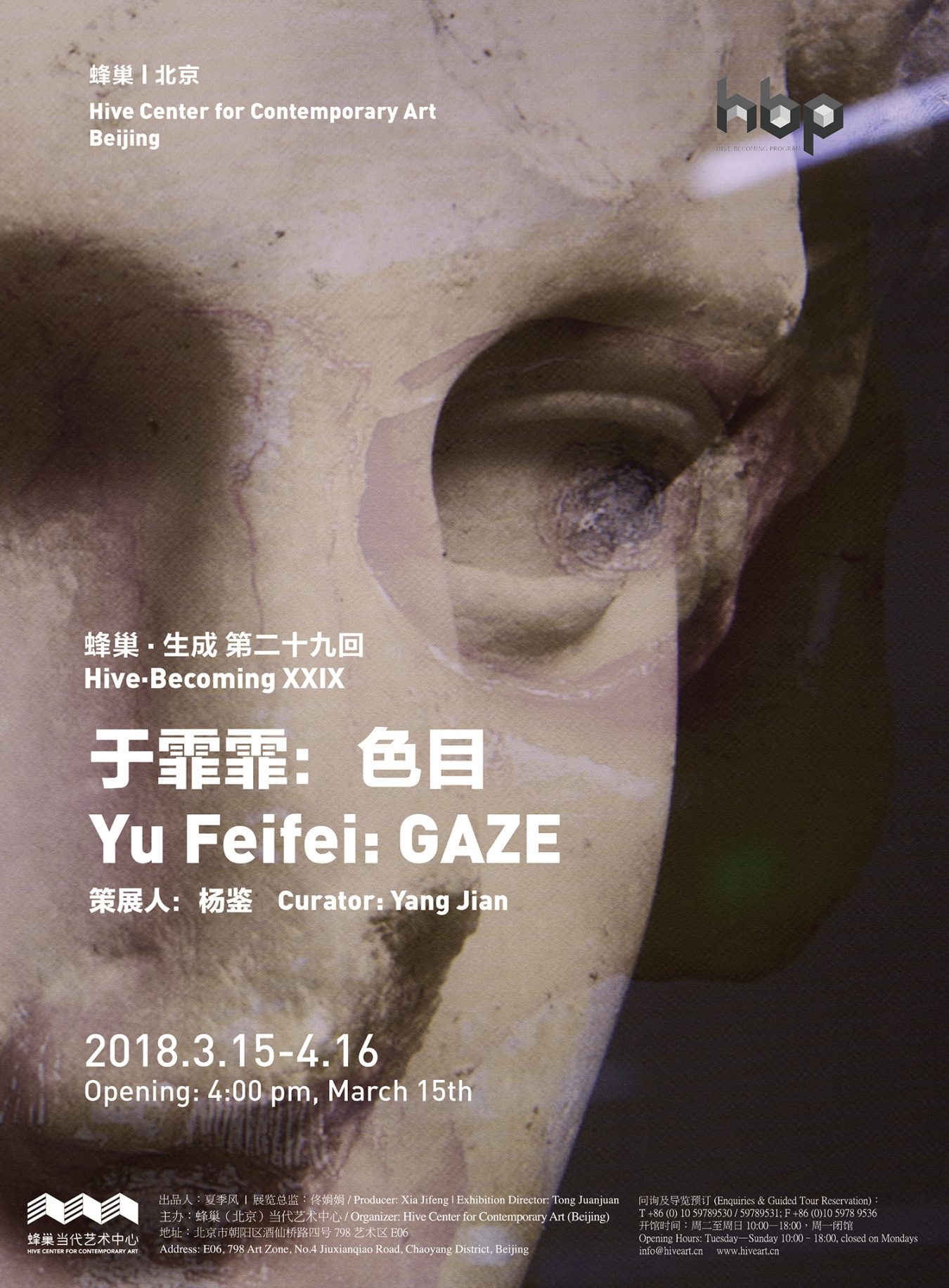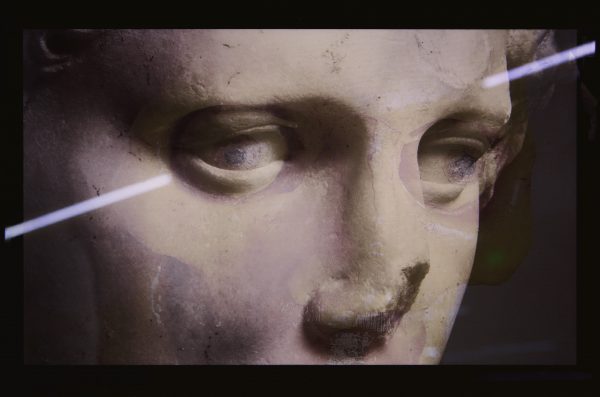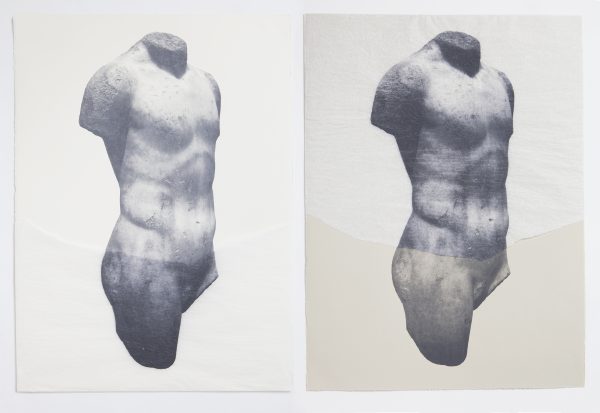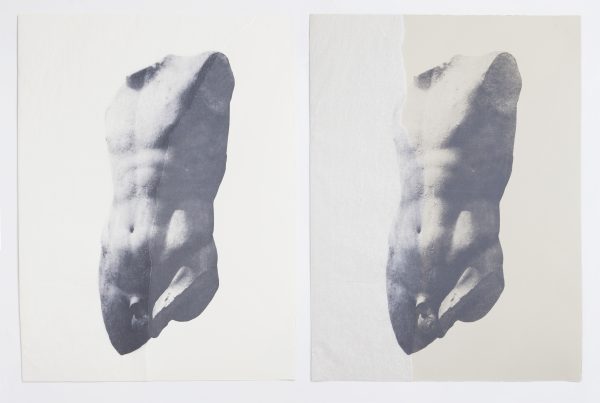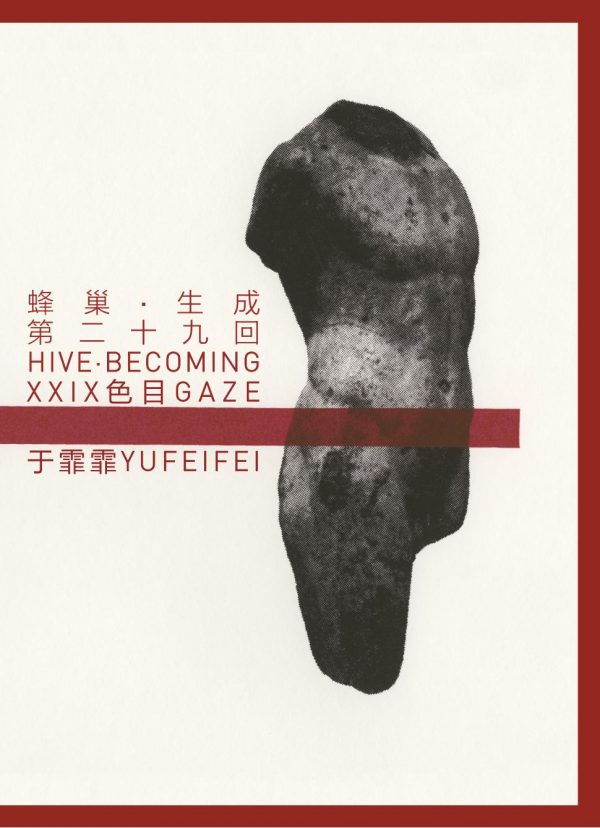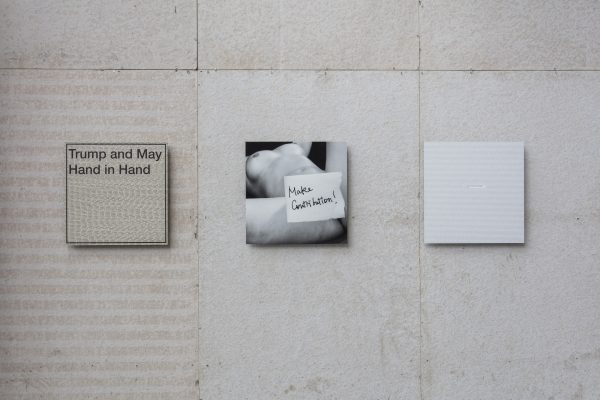
Yu Feifei
2017. Freehand, screen printing, digital printing on news color paper,
Japanese paper and Photo Rag Baryta. 50×50cm×5.
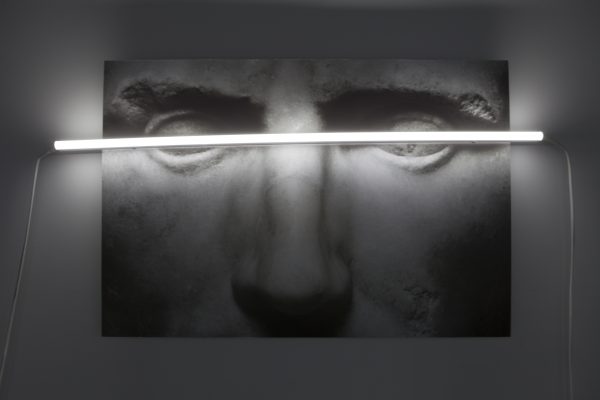
Yu Feifei
2017. Epson ultra giclee print on Photo Rag Baryta, LED light installation. 68×100cm×5.
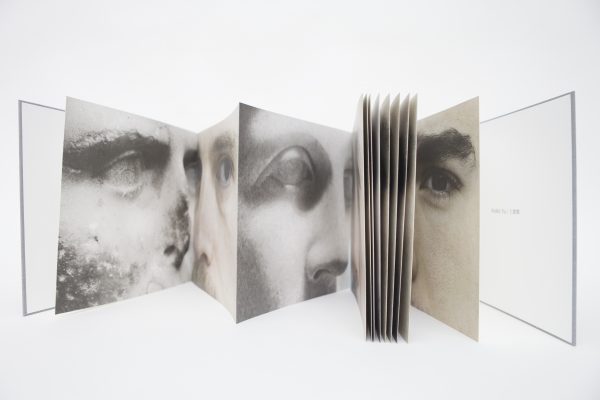
Yu Feifei
2016. Lithography on hand-made paper,artist bookbinding in London Book Art. 23×23cm.
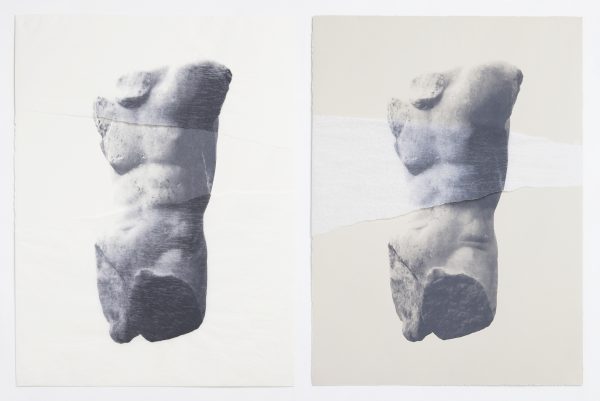
Yu Feifei
2016. Mono screen printing, mixed media collage on news, and cream color Somerset Paper. 72×56cm×2.
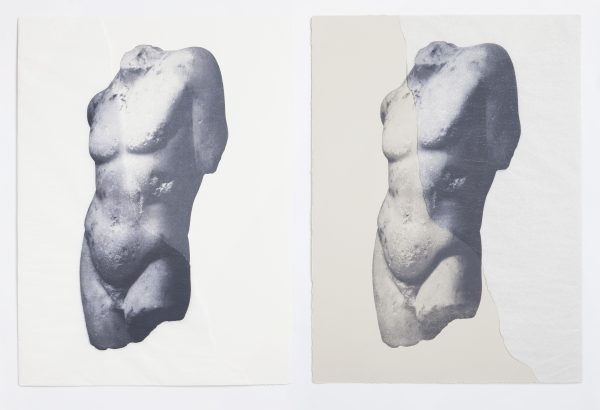
Yu Feifei
2016. Mono screen printing, mixed media collage on news, and cream color Somerset Paper. 72×56cm×2.

Yu Feifei
2016. Mono screen printing, mixed media collage on news, and cream color Somerset Paper. 72×56cm×2.
Hive Center for Contemporary Art (Beijing)is honored to present “HBP XXIX – Yu Feifei: Gaze” in Halls C, D, and E during Gallery Weekend Beijing 2018. Rooted in sociology and anthropology, Yu Feifei’s art practice tries to explore the individual cultural identity and to analyze its formation and evolution. Her work revolves around both the self-questioning that aims at developing visual language and the re-discovery of secular and mundane scenes, putting forward new visual possibilities from the perspective of the contrast and counterbalance between desire and power.
During her long-term work, Yu Feifei has continuously conducted a great number of visual and theoretical examinations and studies on Gaze. Her early artistic creation serves only as a spillway that carries away surplus interpretations of man’s gazes. But as her subsequent practice increasingly adopts artifacts that bring in more and more images referring to history, it becomes urgent for her to compare between the past and the present and to question them. The “Gaze” here is not only a description that implies something inexplicit but also unavoidably encompasses a suspended ambiguity. It can be an intent state of looking, a transcendence of the looking in daily life, turning into a suspended practice, a state of detachment; it can also be a state of amazingly indifferent observing so as to fixate or capture something, and the subject in the state can neither move nor settle, like an instant that cannot take root. And what’s more commonly agreed is that “Gaze” is an attitude of class-based judgment, a kind of bothering and denying. What Yu Feifei tries to discuss in her work is the uncertainty and ambiguity of the gaze, and, by looking into the chronicle and temporal features accompanied by “Gaze”, she explores the possibility of their emergence.
Visually, Yu Feifei’s works have stunningly impressed us with their use of classical statues. The reason may be that classical statues are the most exquisite examples as they are the tangible marks of a people and culture and the tangible and abstract ideals of man—the ideals that the people and the culture can draw out of callous and formless materials. And as early as in the 5th century BC, the naked body in classical sculpture was proved by ancient Greeks as an art form –“nude”, so “nudes” were also classified as a form that can be seriously adopted and intellectualized in art-making. Various expressive approaches allow Yu Feifei to visually break, arrange, juxtapose and extract from sculptures of different times in her art practice. In this way, viewers will automatically see them as human heritage without wondering about their origins since now they have been endowed with greater openness and wider directionality. And now these picturized stone statues and their naked postures have been stripped of every intention of their original makers, be it narrative, anatomical, classifying, semantic, symbolic, or sanctifying. They end up more like a really pure thing or in their most figurative form: a naked body. With the opportunity generated on this basis for creation, the artist has learned gradually about how she should work on these visual materials since she started her studies through the construction mechanism of cultural history and canons along with her introspection and self-understanding.

